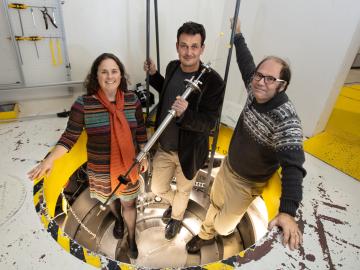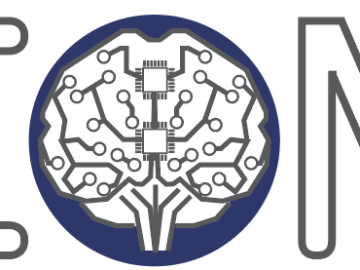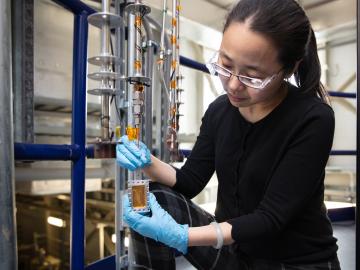
Filter News
Area of Research
- (-) National Security (12)
- (-) Neutron Science (16)
- (-) Supercomputing (33)
- Advanced Manufacturing (2)
- Biology and Environment (16)
- Computational Biology (1)
- Electricity and Smart Grid (1)
- Energy Science (40)
- Fusion and Fission (3)
- Fusion Energy (1)
- Isotopes (2)
- Materials (41)
- Materials for Computing (5)
- Nuclear Science and Technology (2)
News Topics
- (-) Artificial Intelligence (27)
- (-) Clean Water (2)
- (-) Grid (4)
- (-) Materials (10)
- (-) Materials Science (13)
- (-) Transportation (4)
- 3-D Printing/Advanced Manufacturing (5)
- Big Data (18)
- Bioenergy (7)
- Biology (10)
- Biomedical (13)
- Biotechnology (2)
- Buildings (2)
- Chemical Sciences (2)
- Computer Science (52)
- Coronavirus (10)
- Cybersecurity (8)
- Energy Storage (3)
- Environment (20)
- Exascale Computing (16)
- Fossil Energy (1)
- Frontier (17)
- High-Performance Computing (27)
- Hydropower (1)
- Isotopes (1)
- Machine Learning (16)
- Mathematics (2)
- Microscopy (2)
- Nanotechnology (6)
- National Security (24)
- Neutron Science (56)
- Nuclear Energy (4)
- Partnerships (1)
- Physics (5)
- Polymers (1)
- Quantum Computing (11)
- Quantum Science (12)
- Security (7)
- Simulation (12)
- Software (1)
- Space Exploration (2)
- Summit (22)
Media Contacts

In the race to identify solutions to the COVID-19 pandemic, researchers at the Department of Energy’s Oak Ridge National Laboratory are joining the fight by applying expertise in computational science, advanced manufacturing, data science and neutron science.

We have a data problem. Humanity is now generating more data than it can handle; more sensors, smartphones, and devices of all types are coming online every day and contributing to the ever-growing global dataset.

As the second-leading cause of death in the United States, cancer is a public health crisis that afflicts nearly one in two people during their lifetime.

A typhoon strikes an island in the Pacific Ocean, downing power lines and cell towers. An earthquake hits a remote mountainous region, destroying structures and leaving no communication infrastructure behind.

Scientists at have experimentally demonstrated a novel cryogenic, or low temperature, memory cell circuit design based on coupled arrays of Josephson junctions, a technology that may be faster and more energy efficient than existing memory devices.

Students often participate in internships and receive formal training in their chosen career fields during college, but some pursue professional development opportunities even earlier.

Scientists at the U.S. Department of Energy’s Brookhaven National Laboratory have new experimental evidence and a predictive theory that solves a long-standing materials science mystery: why certain crystalline materials shrink when heated.

Artificial intelligence (AI) techniques have the potential to support medical decision-making, from diagnosing diseases to prescribing treatments. But to prioritize patient safety, researchers and practitioners must first ensure such methods are accurate.

Materials scientists, electrical engineers, computer scientists, and other members of the neuromorphic computing community from industry, academia, and government agencies gathered in downtown Knoxville July 23–25 to talk about what comes next in

Researchers at the Department of Energy’s Oak Ridge National Laboratory, Pacific Northwest National Laboratory and Washington State University teamed up to investigate the complex dynamics of low-water liquids that challenge nuclear waste processing at federal cleanup sites.


